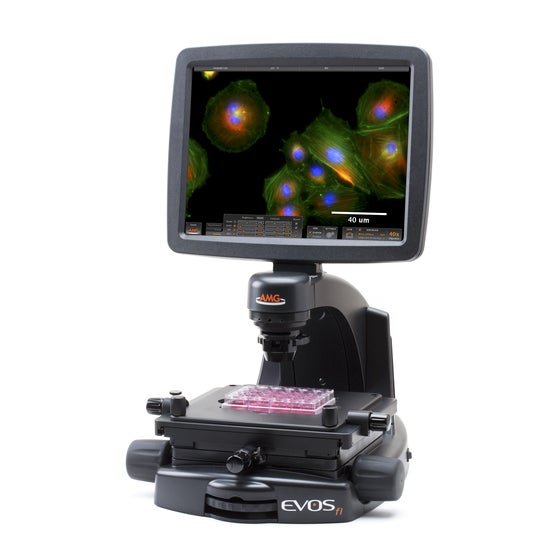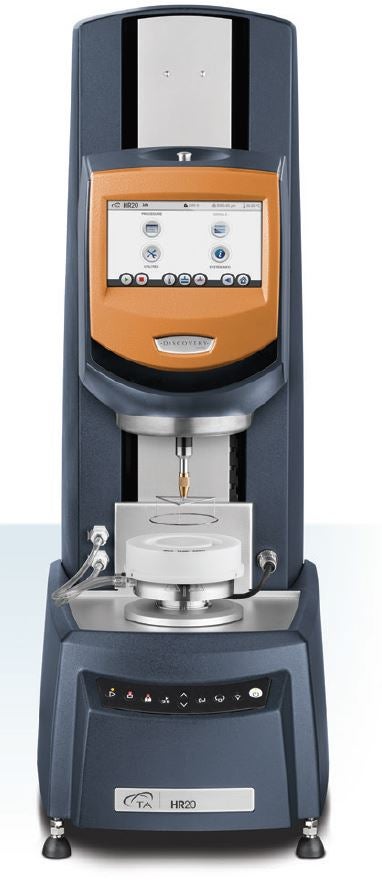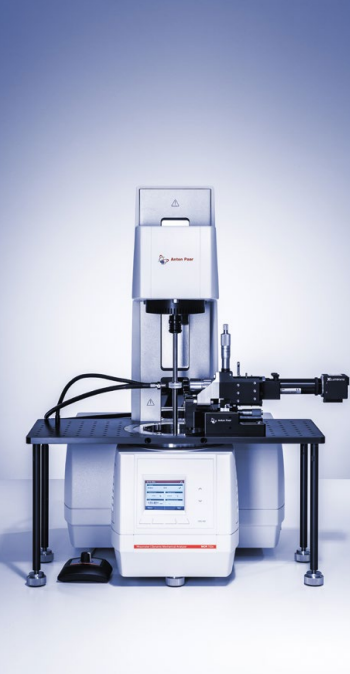
Welcome to the Department of Chemical Engineering’s Analytical Laboratory Facilities.
We provide analytical instrumentation and expertise to the University of Waterloo and the surrounding research and industrial community. We are equipped with a variety of state-of-the-art equipment. Other more specialized equipment is available in individual research labs.
We have two different service options available.
Option 1 - Researchers can be trained in the use of the equipment and carry out their research and measurement independently.
Option 2 –Researchers and industry can send samples to our lab for our technical staff to process.
For internal users including members of the Department of Chemical Engineering and the University of Waterloo, please check our website for more information, including booking calendar and lab fees.
For more details, contact Charles Dal Castel, 519-888-4567 x 40979, or Faten Salim, 519-888-4567 x 41581.
Our Team
Dr. Charles Dal Castel
Lab Director, Research & Special Projects

Charles holds a doctorate degree in Polymer chemistry (2012, Exchange Program, Federal University of Rio Grande do Sul, Brazil, and University of Waterloo). Charles has an extensive expertise in analytical and material characterization techniques. His knowledge and expertise have developed throughout his graduate research work and his time managing the ChemEng analytical lab providing training and guidance to all lab users.
Office: E6 3104
519-888-4567 x 40979
Dr. Faten Salim
Analytical Laboratory Specialist

Faten received her doctorate degree in analytical chemistry from the University of Waterloo in 2019. She has broad experience in method development and validation covering various components of the analytical process including sampling, sample preparation, chromatographic separation, and mass spectrometry both in academic and industrial settings.
Office: E6 3102
519-888-4567 x 41581
Equipment
The list of the testing instruments currently available in the analytical lab in Chemical Engineering is presented below.
Atomic Force Microscopy (AFM)
Typical applications:
- Imaging, measuring and manipulating matter at the nanoscale (lateral resolution of 1Å and a vertical resolution of 0.1Å)
- Differentiate areas on a sample based on properties such as friction, adhesion, and viscoelasticity (Phase Imaging)
- Measures frictional forces on a surface (Lateral Force mode)
Instrument:
- Digital Instruments Multimode Atomic Force Microscope with IIIa controller
Capabilities:
- Contact, non-contact, and tapping mode
- Standard probe holder and fluid cell probe holder
Scanners:
- J scanner: range 125x125x5 µm
- E scanner: range 10x10x2.5 µm
- A scanner: range 0.4x0.4x0.4 µm
Cary Eclipse Fluorescence Spectrophotometer

Typical applications:
- Used to quantify and characterize fluorescent compounds
Instrument:
- Agilent Cary Eclipse
Capabilities:
- Excitation and Emission range: 200-900 nm
- Scan rate 0.010 to 24,000 nm/min
- Temperature controlled cuvette holder
- Well plate reader
- Fiber optic attachment for remote reading or solid samples
Circular Dichroism Spectroscopy (CDS)/UV-Vis Spectroscopy
Typical applications:
- CDS: Characterization of structural aspects of proteins and DNA (a-helix, b-sheet). Conformational stability of proteins.
- UV-Vis: Quantitative measurement of discrete wavelengths of UV or visible light that are absorbed by a sample.

Instrument:
- Jasco J-815
Capabilities:
- Light source: 150 W Xe arc lamp.
- Wavelength range: 163-900 nm (Nitrogen gas purge).
- Circular dichroism (CD), UV-Vis absorbance, and Fluorescence (excitation).
- Peltier cuvette holder for temperature-controlled measurements (-10°C to 110°C).
- Cuvettes available: 0.1, 1, 5, 10 mm.
- Amount of sample required: 0.04 to 4 mL.
Confocal Microscopy
Confocal Microscopy

Typical applications:
-
High-resolution imaging of cellular structures and organelles.
-
Visualizing the 3D organization of tissues and cells.
-
Studying molecular localization and dynamics using fluorescently labelled markers.
-
Investigating surface properties and material interfaces in 3D.
Instrument:
- Nikon Eclipse Ti2 Spinning Disk Confocal Microscope
Capabilities:
- Light Source: Crest X-light V2 with 7 lasers - 365, 440, 488, 514, 516, 640, and 730 nm.
- Objectives: 10x, 20x, 60x (water)
Differential Scanning Calorimetry (DSC)
Typical applications:

- Determination of phase transitions: Melting (Tm) and crystallization (Tc) temperature.
- Glass transition temperature (Tg)
- Heat capacity
- Reaction kinetics
Instrument:
- TA instruments Q2000 with RCS90
Capabilities:
- Temperature range from -90°C to 400°C (550°C in non-isothermal experiments)
- Tzero and Tzero hermetic pans.
- Experiments in nitrogen or air (oxygen is also possible)
- Modulated DSC
- Autosampler
- Amount of sample required: 2 to 20 mg
Digital Microscope
Digital Microscope
Typical applications:
- A digital microscope uses optics and a digital camera to output captured images to a computer monitor.
Instrument:
- 4k digital camera with optical zoom from 0.7 to 4.5X.
Dilatometer
Typical applications:
Measurement of dimensional changes of materials as a function of temperature. Characteristics measured using the dilatometer include coefficient of thermal expansion (CTE), curie point, crystalline transformation, glass transition temperature, and phase transitions.
Instrument:
- Orton Dilatometer D1000
Capabilities:
- Temperature range: Room temperature to 1500°C
Dynamic Light Scattering and Zeta Potential (DLS)
Dynamic Light Scattering and Zeta Potential (DLS)

Typical applications:
- Determination of particle size, molecular weight and zeta potential.
Instrument:
- Zetasizer Nano ZS
Capabilities:
- Size range (diameter): from 0.1 nm to 10 µm
- Size range (zeta potential - diameter): from 3.8 nm to 100 µm
- Molecular weight (Daltons): from 342 to 2x107 Da
- Red Laser: 632.8 nm
- Measurement angles: 175º and 13º
- Temperature control: 0 to 90 ºC
Inverted Optical Microscopy (OM)
Fluorescence Optical Microscopy
Typical applications
- Examination and analysis of micro-level biological samples in transmission mode.
EVOS fl Fluorescence Microscope

Capabilities:
- Light Source: LED.
- Fully integrated hardware/software.
- Filters for RFP, GFP, DAPI and Texas Red.
- Objectives: 4x, 10x, 20x, 40x, 60x.
Zeiss Axiovert 200M Microscope

Capabilities:
- Light source: Hal 100 W (100 W halogen lamp) and HBO 50 (50 W mercury vapor short-arc lamp)
- Digital image and video capturing, brightfield Köhler illumination, polarized light, fluorescence illumination, differential interference contrast (DIC)
- Fluorescence Filter Cube: 360/40 470/40; 485/20 515-565; 500/20; 535/30; 535/40 605/55; 640/20 680/30
Fourier Transfrom Infrared Spectroscopy (FTIR)
Typical applications:
- Identify and quantify chemical substances or functional groups in solid, liquid, or gaseous forms
Instrument:
- Thermo Nexus 670 with Continuum microscope
Capabilities:
- Detectors: MCT-A (Liquid N2, range: 11700-600 cm-1) and DTGS (room temperature, range: 12500-350 cm-1)
- Sampling modes: Transmission (KBr pellets, NaCl disks, films, liquid cell, gas cell), Attenuated total reflectance (ATR), and diffuse reflectance (DRIFTS)
- IR Microscope: Digital image and video capturing, brightfield Köhler illumination, polarized light, fluorescence illumination, differential interference contrast (DIC), 15x and 32x IR/visible objectives
Gas Chromatography (GC)

Typical applications:
- Separation and quantification of compounds in a mixture that can be vaporized without decomposition
Instruments:
- Agilent 7890A GC and 6890 systems
Capabilities:
- Column oven operating Temperature: Ambient temperature +4°C to 450°C
- Carrier and Make-up Gas: Helium
- Detectors: Flame ionization detector (FID) and Thermal conductivity detector (TCD)
- Inlets: Split/Splitless inlets
- Manual injector for liquid and gas samples
- Autosampler for liquid samples
Gas Chromatography and Mass Spectrometry (GC-MS)

A combination of the separation power of the GC system and the resolving power of mass spectrometry and its capability of providing identification and quantitation of the sample components separated by the GC.
Instruments:
- Varian CP-3800 equipped with two detectors: Saturn 2000 MS/MS detector and Flame Ionization Detector (FID)
Capabilities:
- Manual injector for liquid and gas samples
- Autosampler for liquid samples
- CTC Combi PAL Autosampler compatible with various sampling modes including headspace, liquid, and Solid Phase Microextraction (SPME)
Gel Permeation Chromatography (GPC)

Typical applications:
- Characterization of molecular weight and molecular weight distribution of macromolecules
Instrument:
- Malvern Viscotek TDAmax GPC system with refractive index (concentration), viscometer (size and structure), light scattering (molecular weight), and UV-Vis (chemical composition) detectors
Capabilities:
- Up to 5 columns: room temperature to 80°C
- Autosampler for 120 vials
- Wavelength range: 190-740mm
- Solvent: THF
High Performance Liquid Chromatography (HPLC)
Typical applications:

- Separation and quantification of compounds in a liquid mixture
Instrument:
- Separation module Waters 2690
Capabilities:
- Isocratic and gradient elution (up to 4 solvents)
- Column oven operating Temperature: Ambient temperature +4°C to 65°C
- Photodiode Array Detector Waters 2996: wavelength range from 190 to 800 nm
- Multi λ Fluorescence Detector Waters 2475: Excitation wavelength range from 200 to 890 nm and emission wavelength range 210 to 900 nm
- Refractive Index Detector for non-absorbing samples
- Autosampler
- Amount of sample required: 0.25 to 2mL for single injection
Inductively Coupled Plasma Optical Emission Spectrometry (ICP-OES)
Typical applications:
- Identification and quantification of chemical elements, most commonly metals in aqueous solution in the ppm to ppb range
- Solid samples can be analyzed using digestion/extraction
- Simultaneous analysis of multiple elements

Instrument:
- Teledyne Leeman Labs Prodigy ICP-OES
Capabilities:
- Echelle grating optical system and Large Format Programmable Array Detector (L-PAD)
- General purpose and HF compatible sample introduction system.
- Digestion block, tubes, filters, and accessories.
- Standard solutions for a large selection of elements are available. Commonly analyzed elements include: Aluminum, Antimony, Barium, Beryllium, Boron, Cadmium, Calcium, Chromium, Cobalt, Copper, Iron, Lead, Lithium, Magnesium, Manganese, Nickel, Potassium, Silicon, Sodium, Strontium, Thallium, Vanadium, Zinc.
- Autosampler.
- Amount of sample required: 3mL for single injection
Ion Chromatography (IC)
Typical applications:
- Separation and quantification of ions in aqueous solutions in the ppm to ppb range
Instrument:
- Dionex IC system
- Gradient Pump GP40 , Electrochemical Detector ED40, Autosampler AS40
Capabilities:
- Standard bore pump head and column
- Isocratic and gradient elution (up to 4 solvents)
- Conductivity detector with ion suppression
- Currently configured to analysis of anions using column Dionex IonPac AS17
- Standard solutions for a large selection of ions are available. Commonly analyzed elements include: Fluoride, Chloride, Bromide, Nitrate, Nitrite, Sulphate, and Phosphate
- Autosampler
- Amount of sample required: 5mL for single injection
Laser Diffraction Particle Size Analyzer

Typical applications:
- Determination of particle size distribution of dispersed sample suspended in a solvent
Instrument:
- Shimadzu SALD-201V Laser Diffraction Particle Size Analyzer
Capabilities:
- Analyzer with a flow-thru cell
- Particle size range: 0.25 to 350 µm
Rheometer
Typical applications:
- A Rheometer measures the flow properties and viscosity of materials, helping to assess how they behave under different stress, temperature, or shear conditions
- Used in the polymer industry to study the flow properties of materials like molten plastics and rubber. This helps in determining the processing conditions, such as extrusion or injection molding parameters.
- Rheometers help researchers understand the flow behavior of new materials and formulations, aiding in material design and development, especially in complex or multi-phase systems.
TA Instruments - Discovery HR 20

Capabilities:
- Controlled stress (steady, transient, oscillation)
- Controlled strain (steady, transient, iterative oscillation)
- Direct Strain (oscillation)
- Fast data collection
- The temperature range is -160 °C to 600 °C with controllable heating rates of up to 60 °C/min.
- Solvent Trap/Evaporation Blocking System
Anton Paar - MCR 702e

Capabilities:
- Controlled stress (steady, transient, oscillation)
- Controlled strain (steady, transient, iterative oscillation)
- The temperature range is -50 °C to +220 °C with controllable heating rates of up to 60 °C/min.
- Structure analysis of materials under shear using the microscope.
Scanning Electron Microscopy (SEM)
Examination and analysis of micro and nano materials by imaging characterization of solid objects. SEM signals can be used for external morphology (texture) and chemical composition characterization.
Instrument:
- Tescan VEGA TS-5130
Capabilities:
- Tungsten filament
- Accelerating Voltages: 5, 10, 20, and 30 kV.
- Secondary electrons (SE), back scattered electrons (BSE), and energy-dispersive X-ray spectroscopy (EDX) detectors.
- Sample requirement: dry solids, stable under vacuum, and electrically conductive.
Simultaneous Thermal Analyzer (SDT and STA)

Instrument:
- TA instruments Q600
Capabilities:
- Accurate and reliable horizontal dual-balance
- Supports both DSC and TGA measurements
- Weight signal is the differential between the sample and reference beams
- Temperature range from room temperature to 1500°C.
- Platinum and alumina pans
- Experiments in nitrogen or air
- Amount of sample required: 10-30 mg
Spin Coater
Typical applications:
- Technique used to spread uniform thin films on flat substrates by centrifugal force.
Instrument:
- Headway Research Spinner System
Capabilities:
- Programmable controller for multi-step recipes (rpm, ramp, time)
- Speed up to 10,000 rpm
- Multiple sample holders
Sputter Coater
Typical applications:
- A sputter coater applies an ultra-thin, electrically conductive metal coating onto a sample, typically for analysis with a Scanning Electron Microscope (SEM). This coating prevents the accumulation of static charge during SEM observation and enhances the detection of secondary electrons from the sample surface.
Instrument:
- Polaron E5100
Capabilities:
- There are two metal targets available: pure gold or gold/palladium (60/40% alloy) .
Surface Area Analyzer (BET)

Typical applications:
- Determination of surface area by single-point and multipoint BET methods, and total pore volume.
Instrument:
- Micromeritics Gemini VII 2390a
Capabilities:
- Surface Area: from 0.1 m², total; From 0.01 m²/g, specific
- Pore Volume: 4 x 10-6 cm³/g
- Adsorbate: Nitrogen gas in liquid nitrogen sample bath
- 3/8 in. sample tubes
- Heated, nitrogen and vacuum degasser for sample preparation (FlowPrep 060 and VacPrep 061)
- Amount of sample required: 0.1 to 1.0 g (min 10 m2/sample)
Surface Area and Porosity Analyzer
Surface Area and Porosity Analyzer

Typical applications:
- Determination of surface area by single-point and multipoint BET methods and pore size distribution.
Instrument:
- Micromeritics ASAP 2020
Capabilities:
- Adsorbate: Nitrogen gas in liquid nitrogen sample bath
- High-vacuum system. 0.00001 mmHg resolution
- 3L dewar. Up to 72 hours of unattended analysis
- 1/2 in. sample tubes
- Heated vacuum degasser for sample preparation
- Amount of sample required: at least 0.1 g (between 40 and 120 m2/sample)
Tensile Strength Machine

Typical applications:
- Determine the strength and deformation behavior of a material up to the point of fracture.
Model:
- CellScale UniVert
Capabilities:
- Easy-to-change fixtures and load cells for various applications
- Integrated imaging for test visualization, analysis, and presentation
- Comprehensive user interface software for straightforward, cyclic, relaxation, and multi-modal testing with immediate feedback
- Integrated environmental chambers
- Optional secondary axes for shear, torsion, or pressure testing.
Thermal Gravimetric Analysis (TGA)

Typical applications:
- Determination of thermal stability of materials
- Composition of mixtures
- Reaction kinetics
Instrument:
- TA instruments Q550
Capabilities:
- Temperature range from room temperature to 1000°C
- Platinum pans
- Experiments in nitrogen or air
- Autosampler
- Amount of sample required: 10-30 mg
UV-Vis NIR Spectrophotometer
Typical applications:
- Quantitative measurement of discrete wavelengths of UV or visible light that are absorbed by a sample.
Biochrom Ultrospec 4300 pro
Capabilities:
- Wavelength range: 190-1100 nm
- Scanning speed: 6200 nm/minute maximum
- Light sources: tungsten halogen and deuterium
PerkinElmer Lambda 750 S
Capabilities:
- Double-beam, double-monochromator
- Wavelength range: 200-2500 nm
- Scanning speed: 6200 nm/minute maximum
- Light sources: tungsten halogen and deuterium
- Integrating sphere size for reflectance measurement: 60 mm
X-ray Diffraction (XRD)
Typical applications:
- Microstructure analysis (crystallite size, microstrain, disorder, etc.)
- Identification and quantification of crystalline and amorphous phases
- Nano particle size and shape
Bruker D8 Focus

Capabilities:
- Copper target and scintillation detector
- Adjustable slits and acceleration voltage
- Powder, film, and bulk sample holders. Sample spinner. Transmission mode.
- Autosampler
Rigaku MiniFlex II

Capabilities:
- Powder sample holders
- Copper target and scintillation detector. Chromium target available
- Amount of sample required: starting at 0.2 g but typically 2 g for powder
Vibratome
Typical applications:
- Vibratomes are used to cut precise, thick slices (30-1000 µm) from fresh or fixed tissues without freezing or embedding, preserving cell viability, morphology, and 3D structure
Instrument:
- Vibratome 1000 plus